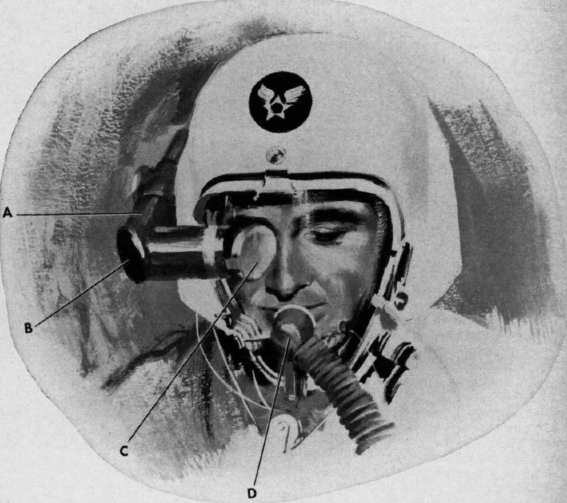|
Just a slightly nifty post from the “nothing new under the sun” file: All that fuss over the (never available) Google Glass, all the hype over the (still unavailable) Oculus Rift, all my excited bewilderment over the (only demoed) Microsoft HoloLens — yet these head-mounted augmented-reality displays have been on drawing boards since at least the ’60s. Given that my life took a weird turn somewhere, I relaxed during my spring break by reading articles in a splendid anthology of material by the Situationist International. One of them, titled “Isolation” from 1964, is itself a blog post of sorts. Just a short intro to four passages quoted from news media — sound bites, as it were — reflecting on the idea that “the entire body of technology, above all the means of so-called communication, is oriented towards the maximum of passive isolation of individuals.” This SI stuff is fascinating to read today, in that the questions they’re posing about civic architecture and urban space are basically the same questions posed decades later about virtual architectures and cyberspace. (Indeed, technology’s alleged “passive isolation of individuals” was reconsidered just three years ago in Jonathan Sterne’s “What If Interactivity Is the New Passivity?”) The “Isolation” piece regards some of the “consolation prizes” — the gadgets that supposedly keep humanity subservient to the Spectacle — and, well, damn if one of them isn’t Glass, Oculus, all of the above.
Quoting the Journal de Dimanche, July 29, 1962: “If you are a TV fan, you are sure to be interested by this, the most extraordinary TV set ever made. It will go everywhere with you. Of an entirely new design, invented by the Hughes Aircraft Corporation of the USA, it is made to be worn on the head. It weighs 950g and is mounted on a pilot-style helmet. It has a tiny round screen made of plastic, looking something like a monocle, which is held four centimetres in front of the eye. Only one eye is used to look at the screen. With the other, the manufacturers claim, you can be looking elsewhere, or even write or be occupied with manual labour.” Yet another innocent gadget with a military genealogy. These were largely theoretical devices until 1971, but a decade earlier the Aviator’s jet biz was tinkering with the unit described above. It was called the Electrocular and was introduced in the June 1962 edition of Electrical Engineering. The first sentence of the article rushes to metaphysicalize the experience, saying that the Electrocular “gives the viewer the equivalent of ‘second sight.’” While the main suggested uses for the device are military, specifically the aiming of weapons for fighter pilots (the long sought-after “look and shoot” ability), the article also mentions industrial applications, such as reading or receiving instructions while performing a hands-on task (which was also a key selling point for a hapless young woman and a televised plumber in the demo video for the HoloLens), as well as presenting data to a surgeon. The latter was highlighted when Popular Mechanics featured the Electrocular (the “TV Monocle”) in a blurb two months later. The same tech was still alive in 1990 and had even taken on a HoloLens character. This time the device was called Private Eye, a “head-mounted ultraminiature CGA-compatible monochrome virtual display.” The device “creates” a screen about the size of 12-inch monitor, “and the image appears to float in space about two feet from the user.” The Private Eye was made by a separate company, though Hughes Aircraft was still in the mix, saying it had plans for the device exactly as described above — feeding maintenance workers instructions when they were in tight spots, like crawling inside a jet engine — which is potent given the way the device was initially pitched, as useful “where CRTs or flat-panel displays are inappropriate.” Because, really, the world is not a desktop.
0 Comments
Leave a Reply. |
this blahg
I'm THOMAS CONNER, Ph.D. in Communication & STS, and a longtime culture journalist. Categories
All
Archives
June 2024
|


 RSS Feed
RSS Feed